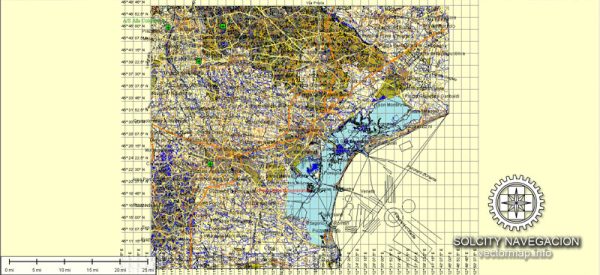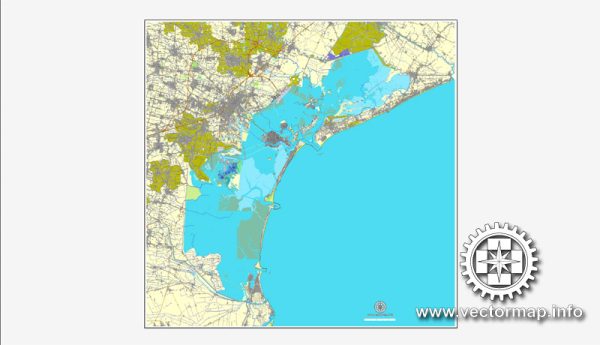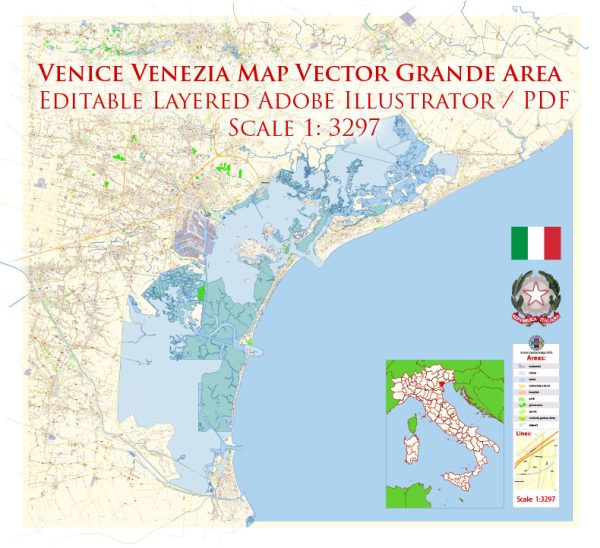Venice, Italy, is renowned for its unique urban development, intricate canal system, and rich cultural heritage. The city’s history spans over a millennium, and its development has been shaped by a convergence of factors, including geography, trade, and artistic and architectural achievements. Here’s an overview of key phases in Venice’s urban development:
- Foundation and Early Settlement (5th – 8th Centuries):
- Venice was founded in the 5th century AD by refugees fleeing mainland Italy during the collapse of the Western Roman Empire. The swampy lagoon provided a natural defense against invading forces.
- The early settlers engaged in fishing, salt production, and later, trade. Islands in the lagoon were connected by wooden bridges, forming the foundation for the city’s distinct urban layout.
- Rise of the Maritime Republic (9th – 12th Centuries):
- Venice developed into a powerful maritime republic during the Middle Ages. The Venetian Republic emerged as a major player in Mediterranean trade, fostering economic prosperity and cultural exchange.
- The construction of the iconic St. Mark’s Basilica and the Doge’s Palace began during this period, showcasing the city’s growing wealth and architectural prowess.
- Trade and Economic Dominance (13th – 15th Centuries):
- Venice became a dominant force in maritime trade during the medieval and Renaissance periods. The city’s merchant fleet controlled key trade routes, establishing Venice as a crucial economic center.
- The construction of the Rialto Bridge in the late 16th century symbolized Venice’s economic strength and architectural ingenuity.
- Artistic and Cultural Flourishing (15th – 18th Centuries):
- The Renaissance and Baroque periods marked a cultural golden age for Venice. The city became a center for art, literature, and architecture, boasting renowned figures such as Titian, Tintoretto, and Palladio.
- The Venetian School of Painting and the establishment of the Venetian Arsenal (shipyard) further contributed to the city’s cultural and economic prominence.
- Decline and Napoleonic Era (18th – 19th Centuries):
- Venice’s economic decline began in the 17th century due to shifts in trade routes and political changes. By the late 18th century, the city came under French rule during the Napoleonic era.
- The fall of the Venetian Republic in 1797 marked the end of centuries of independence.
- Austrian Rule and Italian Unification (19th Century):
- Venice came under Austrian rule following the Congress of Vienna in 1815. The city played a role in the Italian unification movement (Risorgimento) during the 19th century.
- Venice became part of the Kingdom of Italy in 1866.
- 20th Century and Tourism:
- The 20th century saw Venice facing challenges such as depopulation and environmental issues. However, the city’s unique charm continued to attract tourists, and Venice became a UNESCO World Heritage site in 1987.
- Efforts to address environmental concerns, including the impact of high tides (aqua alta), have been ongoing.
- Contemporary Urban Challenges and Preservation:
- Today, Venice faces urban challenges related to over-tourism, rising sea levels, and the need for infrastructure maintenance. Preservation efforts are underway to safeguard the city’s historic architecture and unique character.
Venice’s urban development is a testament to its resilience and adaptability over the centuries. The city’s distinctive layout, canals, and architectural masterpieces contribute to its status as one of the world’s most captivating and historically rich urban environments.




 Author: Kirill Shrayber, Ph.D.
Author: Kirill Shrayber, Ph.D.